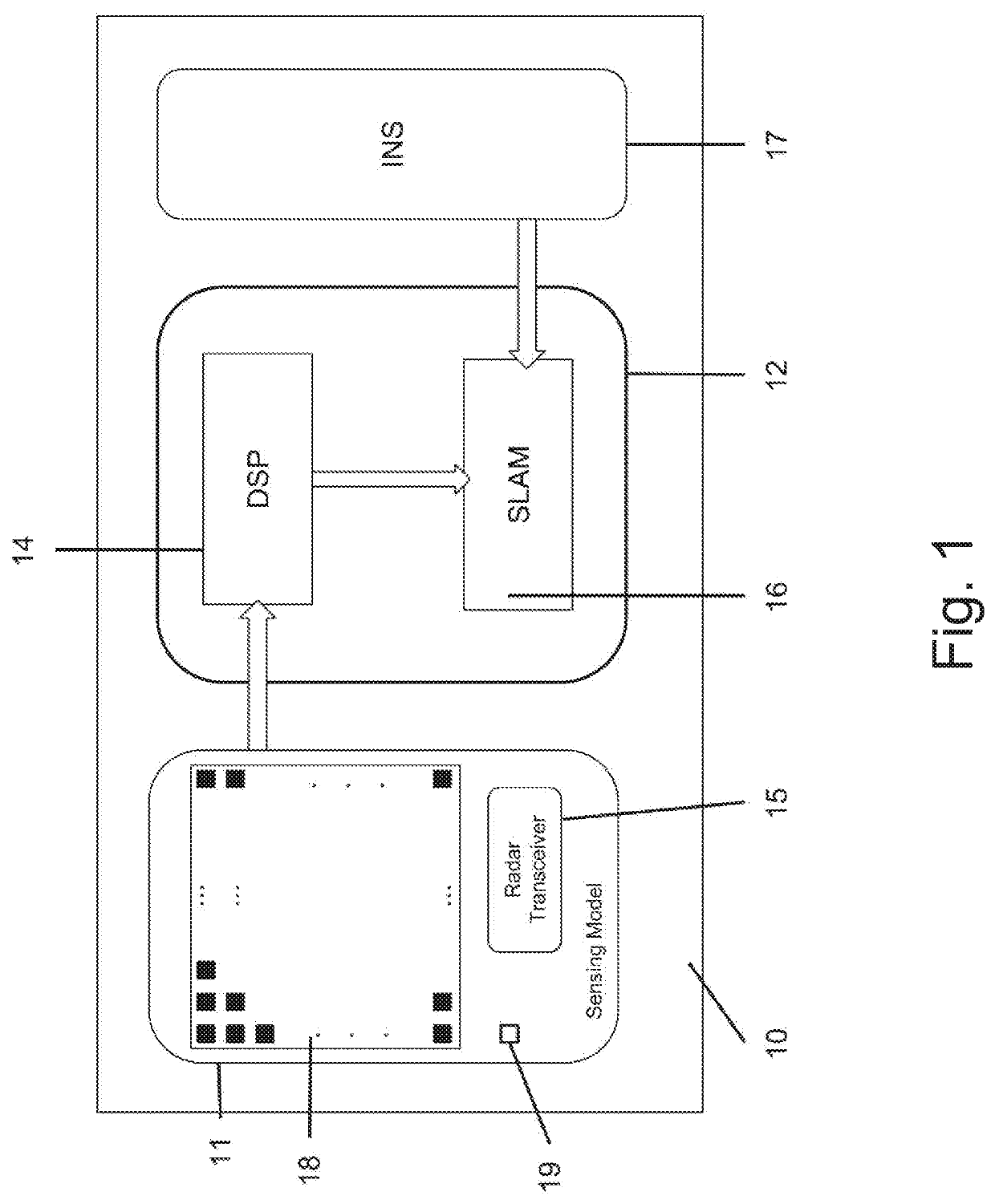Radar-based system and method for real-time simultaneous localization and mapping
- Summary
- Abstract
- Description
- Claims
- Application Information
AI Technical Summary
Benefits of technology
Problems solved by technology
Method used
Image
Examples
Embodiment Construction
[0073]The present invention provides a method and a system for mapping and localization of the objects in the surroundings with respect to an autonomously controlled moving platform. The principle of operation of the system proposed by the present invention is based on a new and unique variation on the known Simultaneous Localization and Mapping (SLAM) technology with respect to sensors that translate their surroundings to a cloud of points, where for each point, it is possible to calculate the probability to be a target, another probability not to be a target and the probability of unknown points that are blocked from the radar view (e.g., a radar sensor). All different probabilities can be calculated directly by the DSP of the radar or deduced from the amplitude and / or the SNR of the point and knowledge of the radar performance. SLAM is a computer algorithm that maps an environment by determining the location of the sampling device and saving the environmental information collecte...
PUM
 Login to View More
Login to View More Abstract
Description
Claims
Application Information
 Login to View More
Login to View More - R&D
- Intellectual Property
- Life Sciences
- Materials
- Tech Scout
- Unparalleled Data Quality
- Higher Quality Content
- 60% Fewer Hallucinations
Browse by: Latest US Patents, China's latest patents, Technical Efficacy Thesaurus, Application Domain, Technology Topic, Popular Technical Reports.
© 2025 PatSnap. All rights reserved.Legal|Privacy policy|Modern Slavery Act Transparency Statement|Sitemap|About US| Contact US: help@patsnap.com



